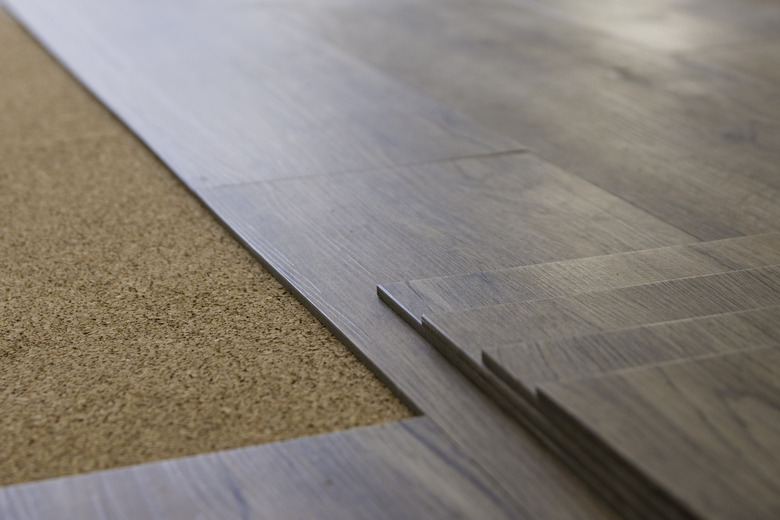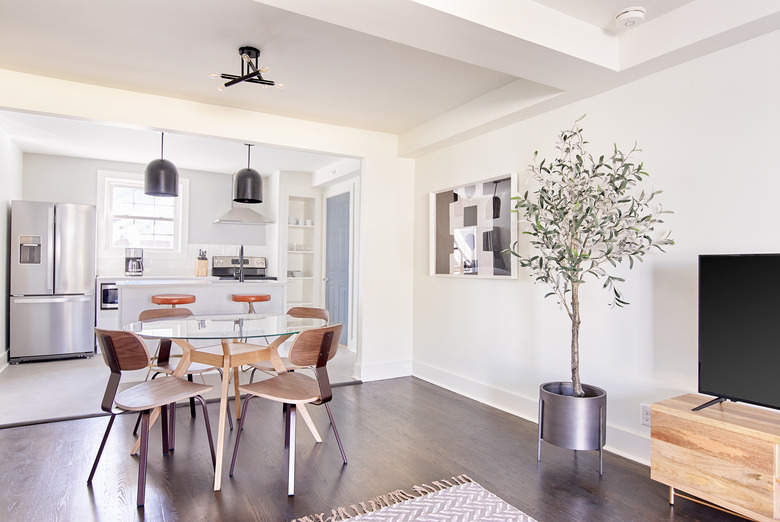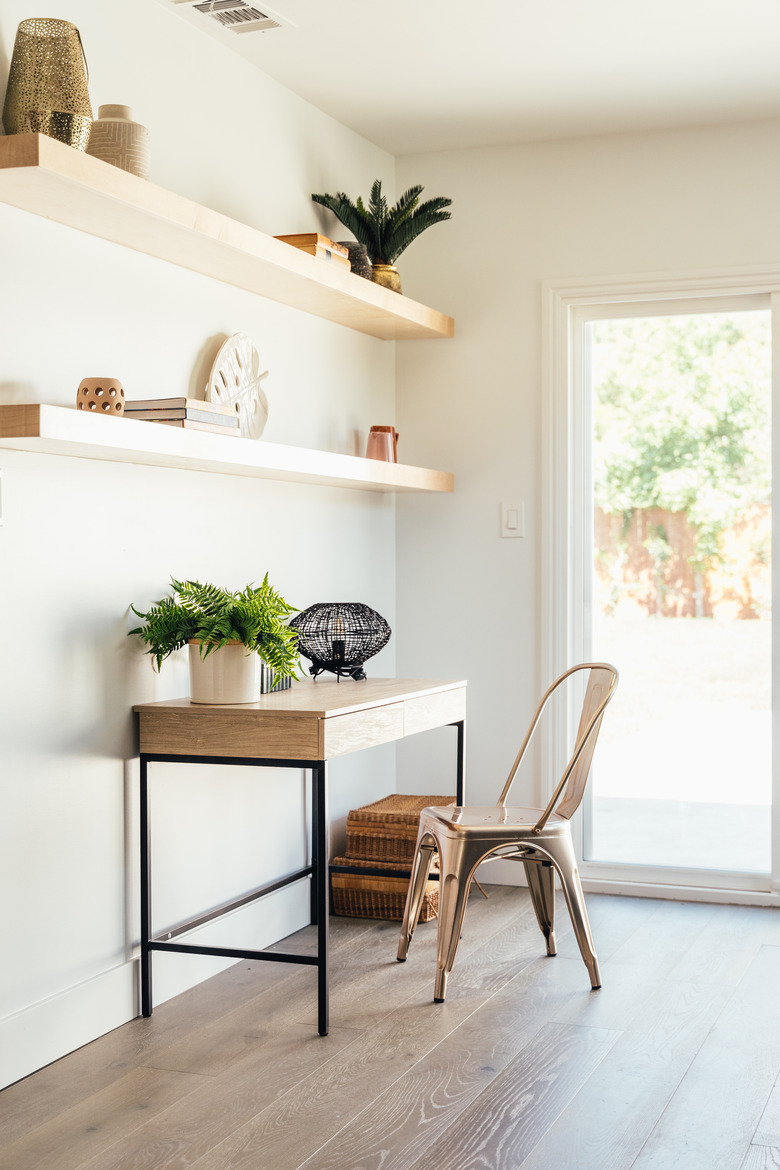Vinyl Plank Flooring (LVP): What You Need To Know
If you're remodeling and you like the look of hardwood flooring, one of your flooring options is luxury vinyl flooring. Yes, you read that correctly: Luxury plank flooring can mimic the look of hardwood so realistically that you can't tell the difference until you look closely, and even then, you'll like what you see. You'll need to limit your choices to the top brands of vinyl flooring — that cost up to twice as much as budget varieties — but you'll get the wood look at a fraction of the cost of installing real hardwood.
Big-time savings isn't the only benefit of choosing luxury plank flooring:
- Vinyl is a waterproof material that can outlast wood hands-down in any high-moisture environment, such as the kitchen.
- Vinyl luxury plank flooring is flexible and can be installed on a subfloor in less-than-perfect conditions or even over existing hardwood, vinyl or tile flooring.
- Plank flooring doesn't require an underlayment and raises the height of the floor by a negligible amount.
One of the biggest pluses is that vinyl plank flooring is probably the easiest to install of all the flooring options out there, and you can do it yourself even if you have limited DIY experience and aren't handy with power tools. The only tools you'll need are a tape measure and straightedge for measuring marking and a utility knife for cutting.
What Is Luxury Vinyl Plank Flooring?
What Is Luxury Vinyl Plank Flooring?
Vinyl plank flooring has been around since the 1970s, according to BuildDirect, but when you add the word "luxury," you're talking about a more recent product that is qualitatively different from earlier versions and continues to evolve.
Related to luxury vinyl tile, which comes in square pieces with a design that mimics natural stone, luxury vinyl plank flooring comes in rectangular planks that are about the same size as laminate flooring planks. The planks almost always display a wood grain pattern, although stone-pattern planks are available, and one of the ways modern products differ from earlier ones is in the quality of the patterns, which are far more realistic than the ones on earlier planks.
That isn't the only difference. Whereas early planks were designed to be glued or otherwise stuck to the subfloor, luxury vinyl planks lock or glue to each other — not to the subfloor — to create a floating floor. That's one reason luxury vinyl plank is one of the most versatile flooring options: A floating floor works in situations in which a glue-down floor would be impractical.
Earlier vinyl planks consisted of little more than a sheet of vinyl and a backing, but luxury vinyl planks have a core. Usually made of a wood plastic composite, the core provides rigidity without making the planks fragile and subject to cracking, it contributes cushioning to make the floor more comfortable and it makes the planks not just water resistant but waterproof. You can install luxury plank flooring below grade, over poorly ventilated crawl spaces and in many other places where you wouldn't think of installing real wood.
A Great Option for High-Traffic Areas
A Great Option for High-Traffic Areas
Luxury plank flooring consists of three discrete layers. The core or base layer comprises up to 65 percent of the plank, according to Floor City, and provides the bulk of a plank. The pattern layer covers the core, and on top of that, a transparent wear layer that consists of several coats of hard urethane resists scuffs, stains and scratches.
You can install luxury plank flooring in the den and living room, where it will look great, but you can also use it in the kitchen, recreation room and other places where flooring suffers the most abuse. It will maintain its new appearance with a minimum of maintenance. Not only do you never have to wax it to maintain its shine but manufacturers actually recommend against wax, which leaves a dull residue and which you'll eventually have to remove.
How Much Does Luxury Plank Flooring Cost?
How Much Does Luxury Plank Flooring Cost?
The cost for luxury vinyl plank can range from $1.50 to $7 or more per square foot. It's usually a good idea to stay away from the lowest-priced products unless all you're looking for is a temporary floor covering for a utility space because they lack the durability and features of the better options. On the other hand, there's usually no need to fork out $7 per square foot either because Floor Critics advises that mid-range products usually have all the features of top-line ones.
Some of the mid-range brands that Floor Critics recommends are Kamdean Korlock, which sells for $4 to $5 per square foot, Mohawk SolidTech, which costs around $3 per square foot, Mannington Adura Max ($3 to $4 per square foot) and Forbo Allura ($3 to $4 per square foot). Armstrong also sells mid-range products, but its top-grade Pryzm luxury vinyl plank flooring can set you back $7 per square foot.
Besides the vinyl plank flooring itself, you also have to figure in a few additional costs. If you don't plan to do the installation yourself, plan on spending between $1 and $4 per square foot for professional installation. On top of that, you'll need to purchase 10 to 20 percent more flooring than you actually need to account for cutting waste. In addition, you may be removing old flooring in preparation for the new vinyl flooring, and demolition costs can range from $1.50 to $2.50 per square foot depending on the type of flooring and the size of the floor.
Pros and Cons of Luxury Vinyl
Pros and Cons of Luxury Vinyl
You might consider luxury plank as one of your flooring options for some of the additional reasons:
- Huge selection: You can choose styles imitating traditional hardwoods, such as oak and maple, as well as old barn wood, hand-scraped hardwood and knotty pine.
- Comfort: The core is slightly compressible, making luxury vinyl more comfortable underfoot than hard flooring like laminate and tile. Luxury vinyl is also quieter than most hard flooring materials.
- Maintenance: Unlike wood floors, luxury vinyl flooring is waterproof and isn't damaged by spills, although it's still a good idea to wipe them up as soon as they occur. You can clean it with a wet mop or even with a steam mop.
No floor covering is perfect, and luxury plank flooring does have its drawbacks. For example, it isn't the best of flooring options in a home with a wheelchair because it tends to shift under a rolling load. Some other problems include:
- No refinishing: Vinyl plank flooring may last for a long time, but it doesn't last forever, and when it wears out, you can't refinish it as you can hardwood.
- Fading: Parts of the floor in direct sunlight will turn a lighter color than the rest of the floor, and parts that remain under furniture or carpeting will remain dark while the rest of the floor turns lighter.
- Denting: The core compresses under heavy loads, such as furniture legs, and the resulting dents can take a long time to decompress if they ever do.
- Chemicals: Many vinyl products, especially the low-price ones, off-gas chemicals such as phthalates that can affect sensitive individuals.
If you're looking to increase the value of your home, flooring options other than luxury plank are more likely to do that. Moreover, luxury vinyl flooring in general isn't the greenest material. Even though the core may be made from recycled materials, which is common for quality products, vinyl isn't biodegradable, and discarded flooring will remain in the landfill for a long time.
Tips for DIY Installation
Tips for DIY Installation
Although luxury plank flooring can be installed over an imperfect subfloor, you can't install it over a subfloor in poor condition, so you have to sand or grind down high spots and fill depressions with leveling compound. A vapor barrier is recommended on concrete subfloors or over unventilated crawl spaces, but this doesn't have to be any more sophisticated than a sheet of plastic. Otherwise, no underlayment is required, and it will just get in the way during installation anyway.
You install click-lock luxury plank flooring using the same techniques as for laminate flooring, but you won't need saws or hammers. You can make straight cuts with a utility knife and a straightedge, and you can also use the knife to cut notches and curves. Because vinyl is flexible, you may sometimes have trouble locking the planks together, but you shouldn't ever have to tap them with a tapping block and mallet as you do laminate planks.
If you purchase luxury plank flooring with glue strips, installation is even easier — just peel the strip and press the planks together. One thing to keep in mind is to clean the subfloor thoroughly before installing glue-together planks because any residual dust that gets on the glue strips will prevent the adhesive from sticking, and the planks will separate.



